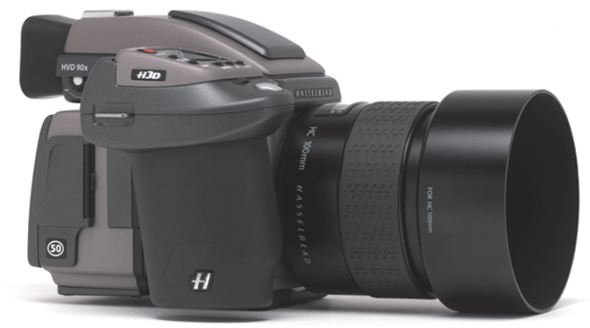50 Megapixel Digital Cameras - Photography Technology
Pricey Photography
Three different companies, Kodak, Phase One, and Leaf, recently announced availability of digital camera image sensors that offer 50 megapixels or more of resolution. Such digital cameras, called medium-format digital cameras, deliver the kind of resolution that professional photographers need. A medium-format camera originally referred to a type of film camera that made use of film wider than 35mm film. The medium-format camera has now migrated to the digital arena, offering extremely high resolutions.
Such cameras typically carry price tags in excess of $40,000, which leaves them out of the range of most non-professional photographers. However, medium-format digital cameras can deliver amazing image quality. For example, Kodak says its 50 megapixel sensor can capture an aerial image of a field measuring 1.5 square miles with enough detail to allow someone to find an object the size of a laptop computer in the photo.
Kodak KAF-50100
Kodak has teamed with Hasselblad to create a 50 megapixel digital camera. Kodak created the image sensor, called the KAF-50100, which offers a pixel array measuring 8,176 by 6,132.
Hasselblad is using the Kodak sensor in its H3DII-50 medium-format digital camera, which will cost about $40,000. Hasselblad also has announced plans to create a 60 megapixel camera.
Leaf AFi-II 10
Offering 56 megapixels of resolution, the AFi-II 10 medium-format digital camera from Leaf makes use of an image sensor that Leaf also developed. The Leaf image sensor offers 9,288 by 6,000 pixels. With those dimensions, the AFi-II 10 has a wider image ratio than most medium-format digital cameras.
Professional photographers can find the AFi-II 10 for around $43,500.
Phase One P 65+
The Phase One company has created both the image sensor and the digital camera for its P 65+ model. The P 65+ digital camera system costs about $42,000 and includes a pixel array measuring 8,984 by 6,732, allowing for 60.5 megapixels of resolution. Phase One worked with DALSA Semiconductor to create its image sensor.
At the time of its announcement, the P 65+ was the largest image sensor available in a medium-format digital camera.
What’s Next
Obviously, most consumer-level photographers have no need for such high resolution digital cameras, let alone the budget to afford one. In addition, the medium-format cameras discussed here are using CCD technology in the image sensor, while consumer-level cameras are migrating to CMOS technology in image sensors, primarily because of the improved processing speed of CMOS. Processing speed isn’t as important with medium-format digital cameras.
So what will these high-resolution digital cameras mean for the majority of photographers?
Not much in the immediate future, unfortunately. However, as with all high-end technologies, eventually the advancements found in these high-resolution digital cameras and image sensors will trickle down to the consumer-level models. Beginner and intermediate photographers may have to wait a few years, but the introduction of 50 megapixel cameras at the top of the market almost ensures that increases in resolution amounts will continue into the foreseeable future for the middle and lower ends of the market.
